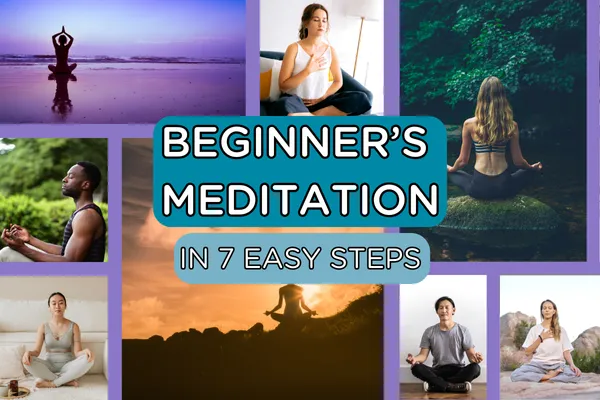General Inquiries: (587) 333-6349 - info@sanostate.com



Beginner’s Meditation - In 7 easy steps!
“Remember that meditation is a practice.” - Dr. Blake Ausmus
Meditation is a practice that has been around for thousands of years, and it's become increasingly popular in recent years due to its numerous benefits for mental and physical health. In meditation, you focus on a particular object, thought, or activity to develop greater mental clarity, calmness, and insight.
One of the most important things to keep in mind when starting a meditation practice is that it's a skill that takes time and practice to develop. You may find that your mind wanders quite a bit when you first start meditating, but that's perfectly normal. The key is to be patient with yourself and keep returning to your breath or chosen focus whenever you notice your mind has wandered.
Here is a simple guide for beginners on doing a meditation:
To get started with meditation, find a quiet place where you won't be interrupted. It can be helpful to create a designated space for your meditation practice, such as a corner of a room with a cushion or chair.
Sit comfortably with your back straight but not rigid. You can sit on a cushion on the floor or in a chair with your feet flat on the ground. You want to be comfortable enough to sit for several minutes without fidgeting or feeling uncomfortable.
Once you're comfortable, close your eyes and take a few slow breaths. Inhale deeply through your nose, filling your lungs with air, and then exhale slowly through your mouth, releasing any tension or stress you may be holding in your body.
Now, focus on your breath. Notice the sensation of the air moving in and out of your body. You can focus on the feeling of your chest or belly rising and falling with each breath. If you find that your mind starts to wander, gently bring your attention back to your breath. Don't judge or get frustrated with yourself for getting distracted. Just acknowledge the thought and let it pass, bringing your attention back to your breath.
As you practice this meditation, you may find that your mind becomes calmer and more focused. You may also experience a sense of relaxation and inner peace. It's important to remember that everyone's experience with meditation is different, and there's no right or wrong way to do it.
When you're ready to end the meditation, take a few more deep breaths and slowly open your eyes. You may want to spend a few minutes sitting quietly, reflecting on your experience and noticing any changes in your thoughts or emotions.
Remember that meditation is a practice. It's something that you can incorporate into your daily routine to help reduce stress, improve focus, and cultivate greater self-awareness. Start with just a few minutes each day and gradually build up to longer periods of time. Over time, you'll find that you can meditate for longer periods of time with greater ease, and you'll start to experience the many benefits of meditation for yourself.
Here it is again, in point form:
Find a comfortable and quiet place to sit.
Sit with your back straight and focus on the feeling of your chest or belly rising and falling with each breath. Close your eyes and take a few deep breaths.
Focus on your breath and notice the sensation of air moving in and out of your body. Release tension.
If your mind wanders, gently bring your attention back to your breath without judgment.
Remember to be patient with yourself and recognize that each meditation experience might be different or similar in certain ways.
When you're ready to end the meditation, take a few more deep breaths and slowly open your eyes.
Practice this for a few minutes each day, gradually increasing the duration.
Meditation is one of many great tools to help manage and reduce stress and anxiety. If this is an area where you could use additional support, please connect with us HERE or by calling 587-333-6349. 💙
Disclaimer
Our content is for informational and educational purposes and is not a replacement for professional advice, diagnosis, or treatment. If you're facing mental health concerns, please seek help from a qualified professional for personalized guidance. Every individual's situation is unique, so use the information here at your discretion. While we strive for accuracy, the field of psychology is ever-evolving, and our content may not always reflect the latest research. Please prioritize your privacy by avoiding sharing personal information in comments or interactions. Your well-being is our top concern, so use our content for educational purposes, but remember to rely on professionals for your specific needs.
General Inquiries:
Our Locations:
Additional Resources:
About Us:
We strive for excellence in psychological treatment. We are committed to providing professional, caring, innovative, and research-based services.
© 2024 Sano State Taylored Psychology. All Rights Reserved.

